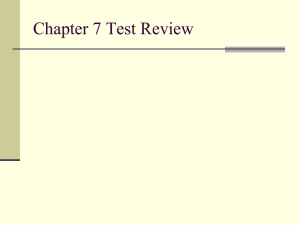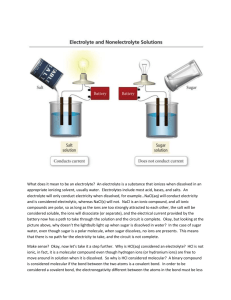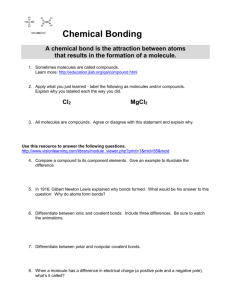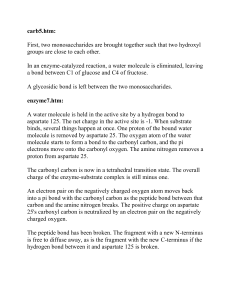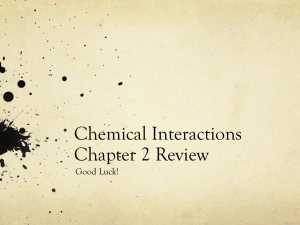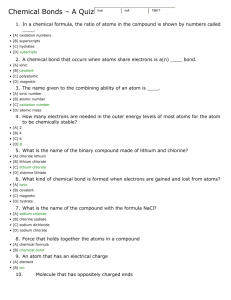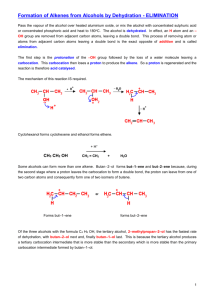B - Teach.Chem
advertisement
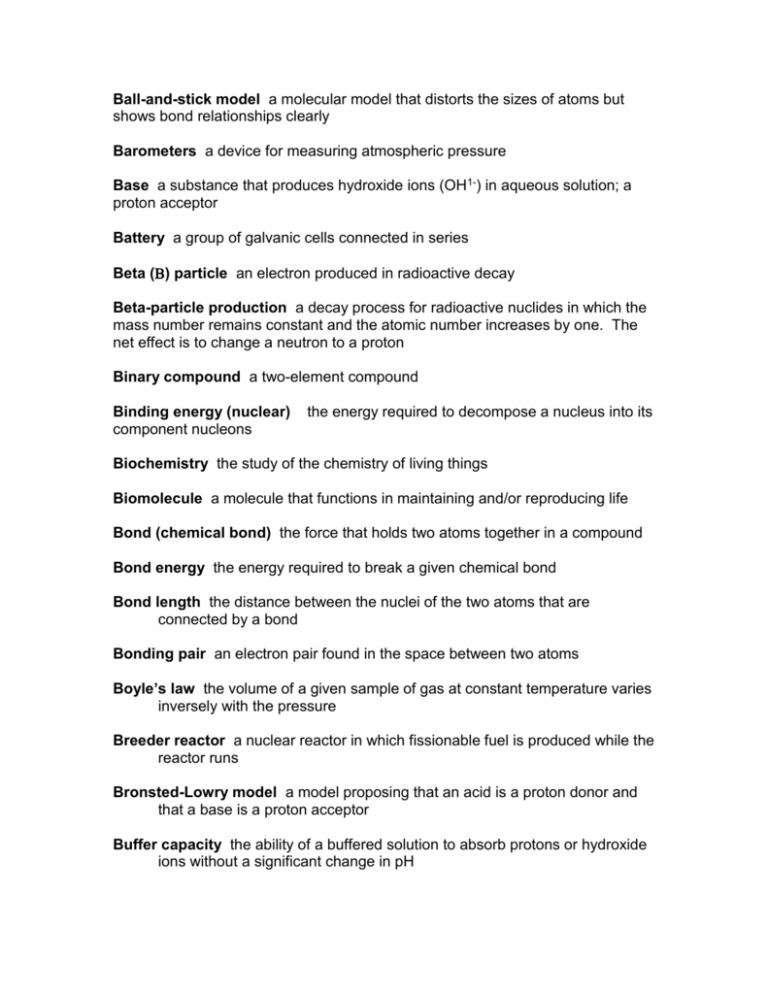
Ball-and-stick model a molecular model that distorts the sizes of atoms but shows bond relationships clearly Barometers a device for measuring atmospheric pressure Base a substance that produces hydroxide ions (OH1-) in aqueous solution; a proton acceptor Battery a group of galvanic cells connected in series Beta () particle an electron produced in radioactive decay Beta-particle production a decay process for radioactive nuclides in which the mass number remains constant and the atomic number increases by one. The net effect is to change a neutron to a proton Binary compound a two-element compound Binding energy (nuclear) component nucleons the energy required to decompose a nucleus into its Biochemistry the study of the chemistry of living things Biomolecule a molecule that functions in maintaining and/or reproducing life Bond (chemical bond) the force that holds two atoms together in a compound Bond energy the energy required to break a given chemical bond Bond length the distance between the nuclei of the two atoms that are connected by a bond Bonding pair an electron pair found in the space between two atoms Boyle’s law the volume of a given sample of gas at constant temperature varies inversely with the pressure Breeder reactor a nuclear reactor in which fissionable fuel is produced while the reactor runs Bronsted-Lowry model a model proposing that an acid is a proton donor and that a base is a proton acceptor Buffer capacity the ability of a buffered solution to absorb protons or hydroxide ions without a significant change in pH Buffered solution a solution that resists a change in its pH when either hydroxide ions or protons are added Buret a device for the accurate measurement of the delivery of a given colume of a liquid


